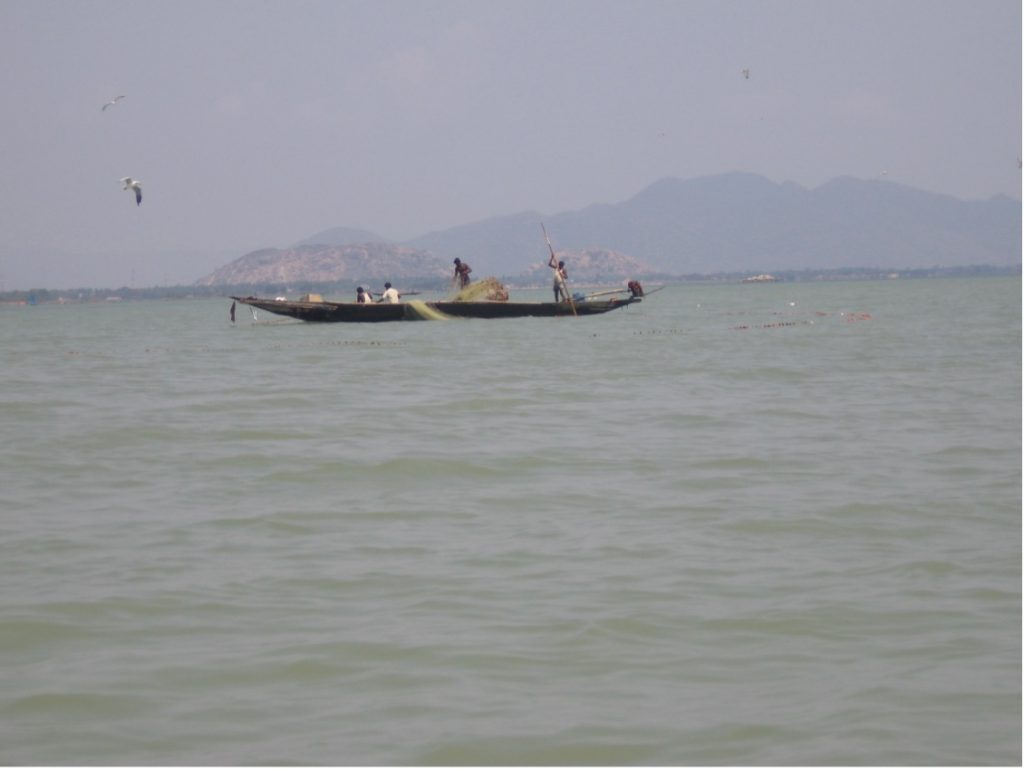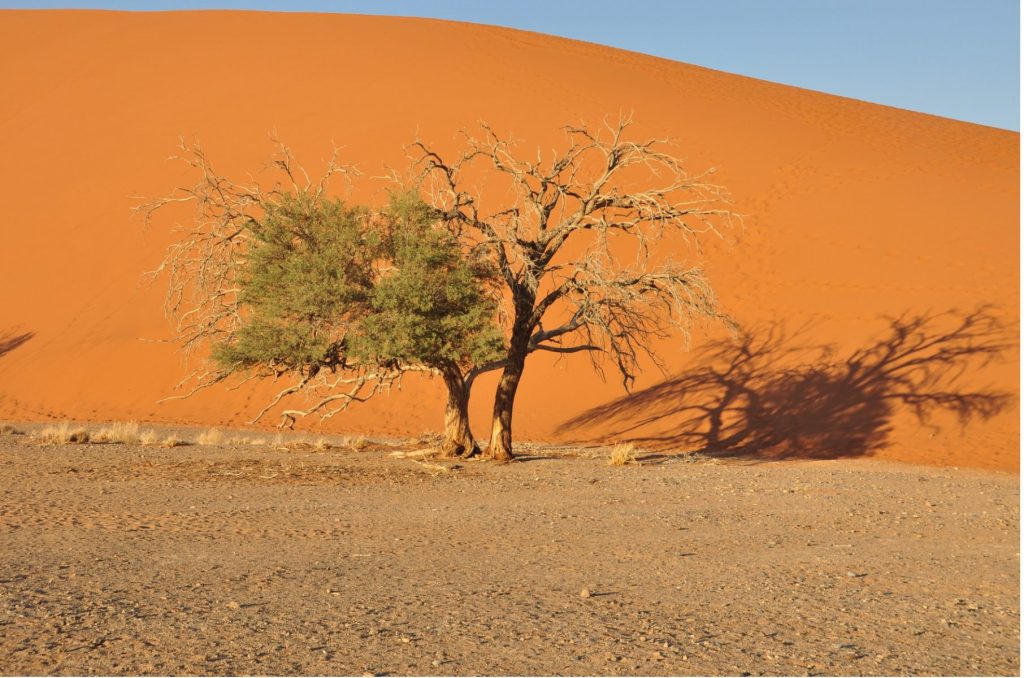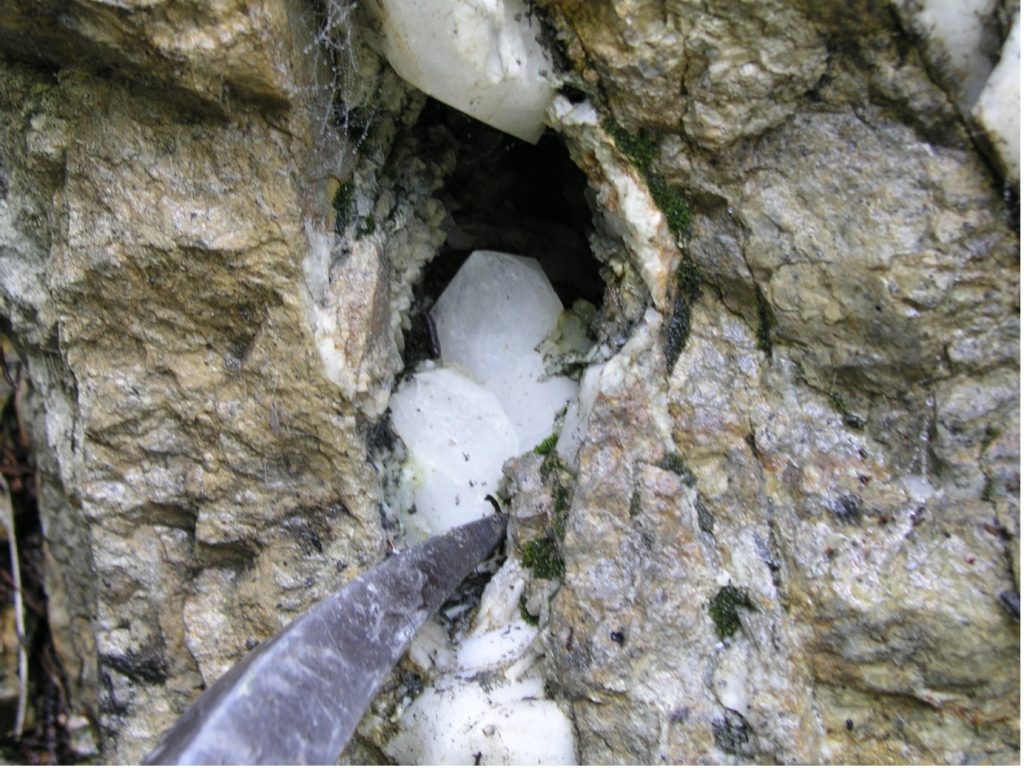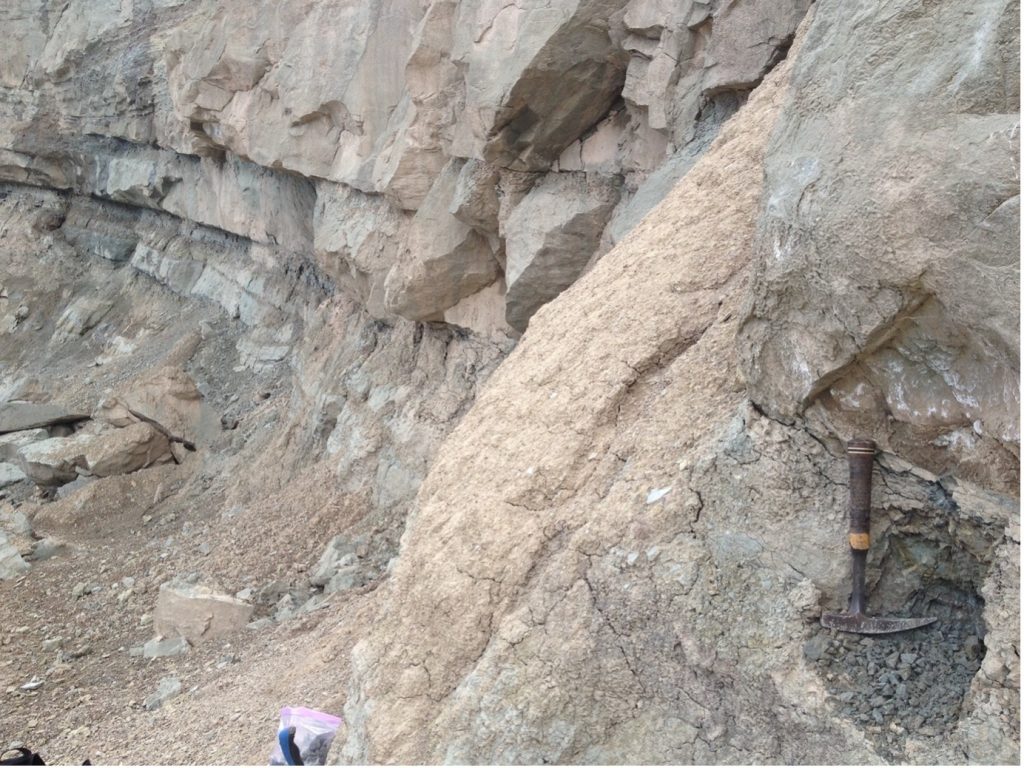Ecosystem studies in Chilika Lake
With a surface of between about 900 and 1170 km2 Chilika Lake is the largest lagoon on the Asian continent and second-largest on a world-wide scale. It is situated on the east coast of Odisha, India, and is an ecologically but also economically and culturally important lagoon that has been recognized as such through the Ramsar convention for wetlands as of 1981. However, this wetland, with a unique biodiversity, home to the Irrawaddy dolphins and important wintering ground for migratory birds, has been subjected to increasing population and agricultural pressures in its catchment, which has had negative impacts on its ecology but also the economic and recreational activities, most notably the fishing industry over the past decades. To evaluate the health of the lagoon and to better understand the present and past environmental evolution of this ecosystem, the Faculty of Geosciences and Environment and UNIL has established an agreement for the exchange of researchers and students with KIIT-University in Bhubaneswar and the Chilika Development Authority of Odisha in India.
The aim of current research projects is to use a geochemical and isotopic approach to help evaluate the functioning of the present ecosystem and hence to assess the anthropogenic influence on this system. As such, the hydrological cycle of Chilika Lake is investigated using an aqueous geochemical and isotopic approach to constrain the water balance amongst the various inputs and drainage basins to this shallow lagoon (average depth of only 1.4 m) and hence the mixing of water. In conjunction with studies on the nutrient cycling that are based on chemical and isotopic compositions of carbon and nitrogen in the water column (plants, phyto- and macro-plankton as well as fish and sediments) the biogeochemical functioning of the ecosystem will be examined. The ecological evolution of Chilika Lake is recorded by the sediments deposited over time within the lake as it is directly related to the erosional and human, agricultural history as well as the climatic evolution within the catchment, all of which affect the sediment dispersal and accumulation within the lake. Furthermore, ostracods as sub-millimetre-sized crustaceans and abundant foraminifera are known to be sensitive ecological indicators and their abundance as well as geochemical and isotopic composition are indicators of oxygenation, salinity, and temperature of the water column in marine and brackish systems; hence they may also help interpret past ecological changes.

Participants: Prakash Kumar Sahoo, Laurent Decrouy, Jorge Spangenberg, Torsten Vennemann
Masters students: Géraldine Bourgeois, Kelly Delavy, Michèle Ecuyer, Caroline Hostettler, Pauline Lange
Namib-Naukluft region groundwater resource management projects
In the framework of a longer-term collaboration between the Universities of Stellenbosch and Cape Town, South Africa, the University of Namibia, Namibia, and UNIL, the water resources in the Namib-Naukluft area of Namibia are being studied in this extremely dry and fragile ecosystem that is of economic, albeit largely touristic importance to Namibia. The ultimate aim of the project is to help the Namibian Government understand the quality and the resource potential of the groundwater sources, vital for this region. With several collaborative Masters and Honours studies completed, the first constraints on the hydrogeology and hydrochemistry of the groundwaters were obtained and the resource potential can now be evaluated. Recently finished and present studies are further investigating and refining this basic understanding, evaluating the mean residence times of the groundwaters, their longer-term recharge rates as well as local and regional sources of natural and anthropogenic contaminants, including a number of groundwaters with excess nitrate concentrations, for example. The research, so far generously supported by the Foundation for National Research (FNR), South Africa, as well as the Fondation Herbette of UNIL, focuses on geochemical and isotopic approaches to understand the infiltration processes across the desert soils, the recharge rates and hence an assessment of the water quality and changes thereof with time.

Participants: Laurent Decrouy, Eric Verrecchia, Torsten Vennemann
Masters students: Laurence Devantay, Anaël Lehmann
Fluid-mineral interaction and implications for the (Alpine) metamorphism and ore mineralization
SNF Project (FNS 200021-143885) These projects are aimed at both complementing the existing knowledge on oxygen isotope fractionation and trace element incorporation into minerals formed at geologically “low” temperatures in a natural context of Alpine-type veins and link the interpretation of mineral-mineral fractionations and zonation to the retrograde path of the regional metamorphism as well as the active fluid flow in the upper-crust. The studies focus on late extension veins from the non-metamorphic diagenetic zones of regional metamorphism (for example the Molasse plateau) to the high-grade epizone and mesozone of metamorphism. In contrast to some previous studies, the approach focuses on choosing veins with coexisting minerals such as quartz, albite, chlorite, and orthoclase and to conduct parallel in-situ (ion-probe and laser-ablation) and some bulk analysis of the isotope and trace element compositions of vein and matrix wall rock minerals, as well as their included fluids and crystallographic properties, so as to characterize their conditions of formation within the metamorphic context. The goal is to characterize a possible evolution of the fluid-mineral equilibrium for the crystals and to understand the crystallization mechanisms controlling the conditions of formation.

Participants: Anne-Lise Jourdan, Eric May, Brice Lacroix (former post-doc), Nicolas Meisser, Benita Putlitz, Torsten Vennemann
Clay minerals as topographic and climatic archives
(EU-SNF project 200020-109456) Clay minerals are hydrous phyllosilicates that are characterized by a high surface area and small grain size, properties that are of interest to medical, material, and environmental sciences because of their sorption and water retainment capabilities, and as sealing material and liners for waste and nuclear disposal sites, water treatment plants, as well as the building industry and as a principle resource for ceramics… In addition, they are of interest for studies on diagenesis related to fossil fuel reservoirs and for paleoenvironmental research as they can be formed in equilibrium with meteoric fluids and both H and O isotope analyses can be made to address climate-related changes in the meteoric water cycle. The present project has focused on evaluating the separation and analyses of clays as well as to understand their formation in regionally different settings in the context of interpreting past and present environmental conditions of clay mineral formation.

Participants: Laszlo Kocsis, Kerstin Bauer, Torsten Vennemann, as well as Thierry Adatte (ISTE)
